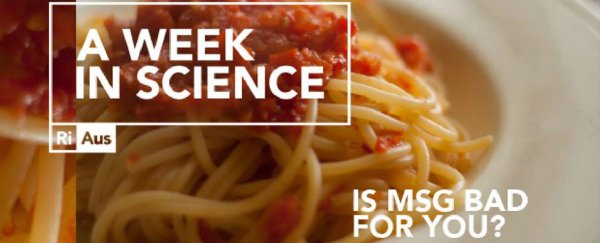
The panic over Monosodium glutamate (MSG) started way back in the 1960s, when a letter was published in the New England Journal of Medicine saying that the flavour additive could cause side effects such as numbness, heart palpitations, flushing, and sweating. In 1972, popular actor, Lorne Green, collapsed on the stairs outside a Chinese restaurant, and told the New York Times that his meal was filled with MSG. This event popularised the notion that MSG was dangerous, and it lives on to this day.
Despite this, extensive testing has failed to show any links between MSG and negative health effects, says the latest episode of RiAus's A Week In Science. And while it's called a food additive, glutamates are often found naturally in fresh foods, such as peas and mushrooms, and are eaten extensively by all cultures.
Glutamates even contribute to the maintenance of our nutrition levels. Glutamic acid is converted to glutamate once inside the human body, and actually plays an important role as a neurotransmitter and an antioxidant. "In fact, if the developed world swapped table salt for MSG, the reduction in sodium intake would prevent tens of thousands of strokes and heart attacks each year," says RiAus.
Watch A Week in Science above to find out the difference between MSG, and the much-celebrated umami.
Source: RiAus
